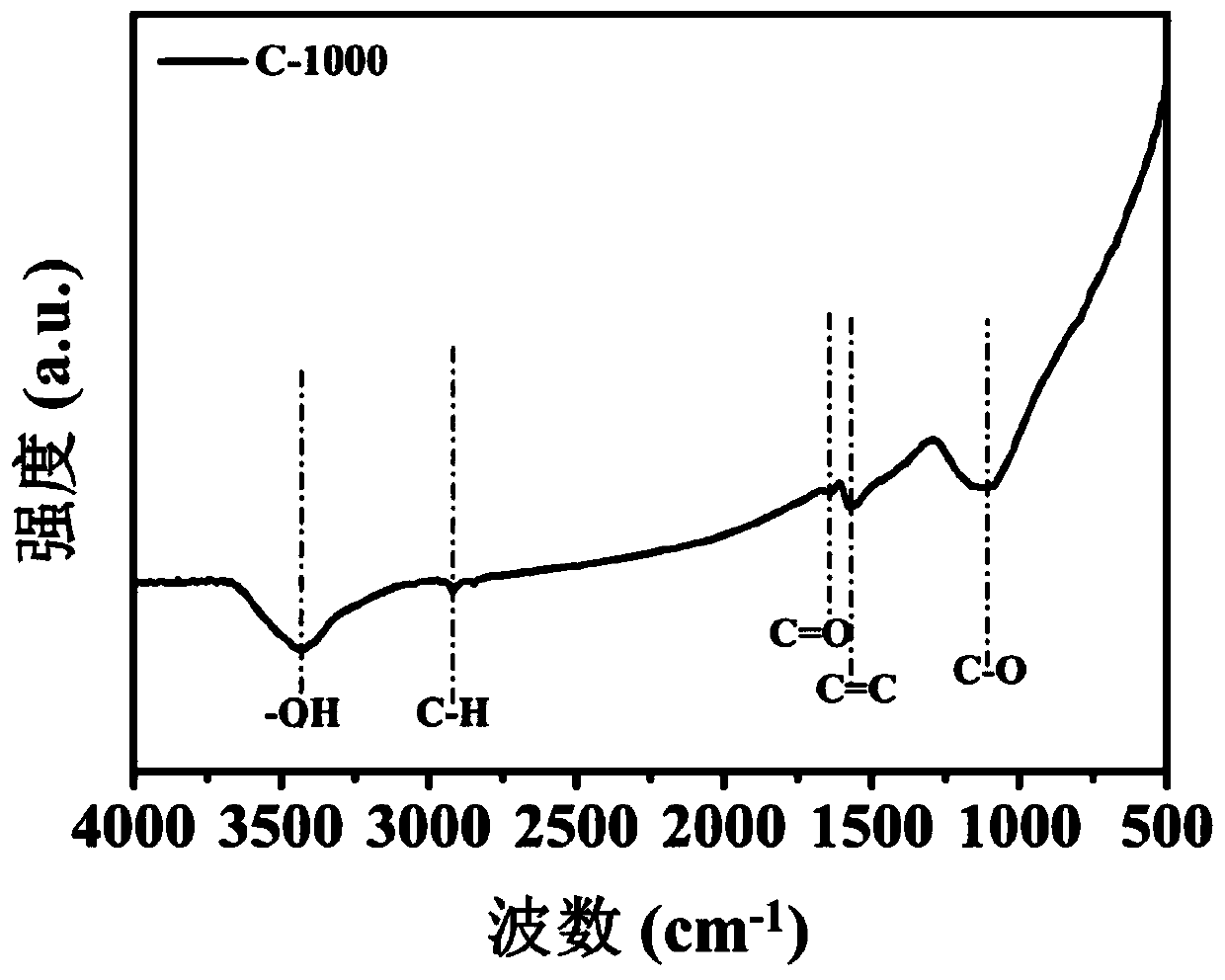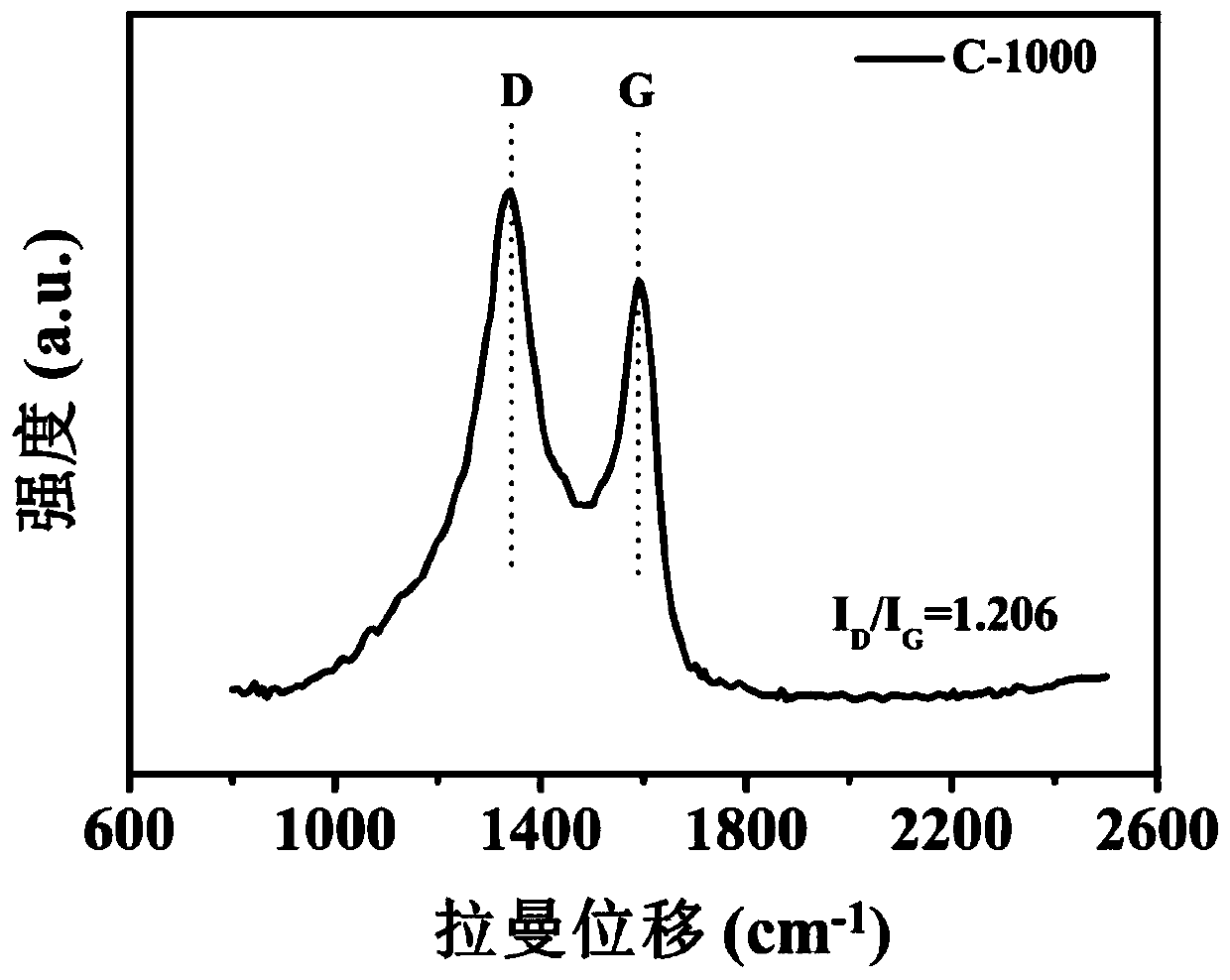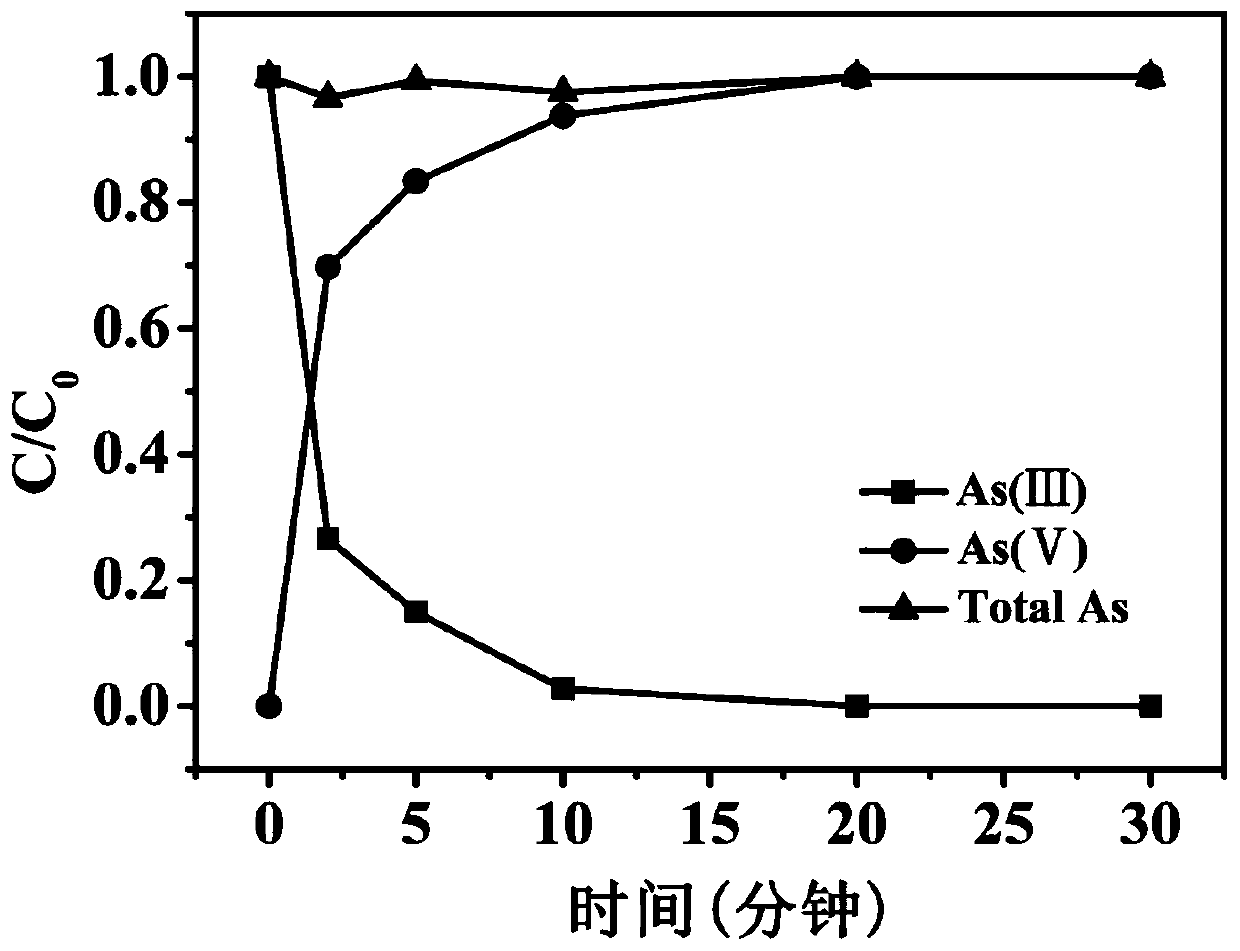Pollutant treatment method based on activation of sulfite by glucose-derived carbon materials
A technology for activating sulfites and sulfites, applied in the field of environmental pollution control, can solve problems such as low catalytic efficiency and secondary pollution of water bodies, and achieve the effects of avoiding secondary metal pollution, low energy consumption and simple preparation method
- Summary
- Abstract
- Description
- Claims
- Application Information
AI Technical Summary
Problems solved by technology
Method used
Image
Examples
Embodiment example
[0044] A carbon material activates sulfite and its application in reducing As(III) pollution in water. The details of this implementation case are as follows:
[0045] (1) 10 g of glucose was put into a tube furnace and calcined at 1000° C. for 120 min under the protection of nitrogen to obtain a carbon material as a catalyst.
[0046] (2) Add the prepared carbon material to the wastewater containing 0.4mmol sulfite and 10μmol As(Ⅲ) at a concentration of 0.1g / L, control the pH of the reaction to 4, the total volume of the reaction system is 20mL, and carry out at room temperature reaction.
[0047] After the sample dilution of taking out, measure with liquid chromatography atomic fluorescence spectrometer, carry out result analysis according to described embodiment:
[0048] figure 1 Infrared spectra of carbon materials. From the infrared spectrum figure 1 It can be seen that the high-temperature carbon material (C-1000) prepared by the present invention still has abundan...
Embodiment 2
[0055] (1) 10 g of glucose was put into a tube furnace and calcined at 1000° C. for 120 min under the protection of nitrogen to obtain a carbon material as a catalyst.
[0056] (2) Add the prepared carbon material to the wastewater containing 0.4mmol sulfite and 10μmol As(Ⅲ) at a concentration of 0.1g / L, control the pH of the reaction to 3, and the total volume of the reaction system is 20mL, and carry out at room temperature reaction.
[0057] After the sample taken out was diluted, it was measured by liquid chromatography-atomic fluorescence spectrometer. This method can completely oxidize As(III) in 30 minutes.
Embodiment 3
[0059] (1) 10 g of glucose was put into a tube furnace and calcined at 1000° C. for 120 min under the protection of nitrogen to obtain a carbon material as a catalyst.
[0060] (2) Add the prepared carbon material to the wastewater containing 0.4mmol sulfite and 10μmol As(Ⅲ) at a concentration of 0.1g / L, control the pH of the reaction to 6, the total volume of the reaction system is 20mL, and carry out at room temperature reaction.
[0061] The sample taken out was diluted and measured with a liquid chromatography atomic fluorescence spectrometer. This method can oxidize about 90% of As(III) in 30 minutes, and As(III) has been completely removed in 60 minutes.
PUM
 Login to View More
Login to View More Abstract
Description
Claims
Application Information
 Login to View More
Login to View More - R&D
- Intellectual Property
- Life Sciences
- Materials
- Tech Scout
- Unparalleled Data Quality
- Higher Quality Content
- 60% Fewer Hallucinations
Browse by: Latest US Patents, China's latest patents, Technical Efficacy Thesaurus, Application Domain, Technology Topic, Popular Technical Reports.
© 2025 PatSnap. All rights reserved.Legal|Privacy policy|Modern Slavery Act Transparency Statement|Sitemap|About US| Contact US: help@patsnap.com



